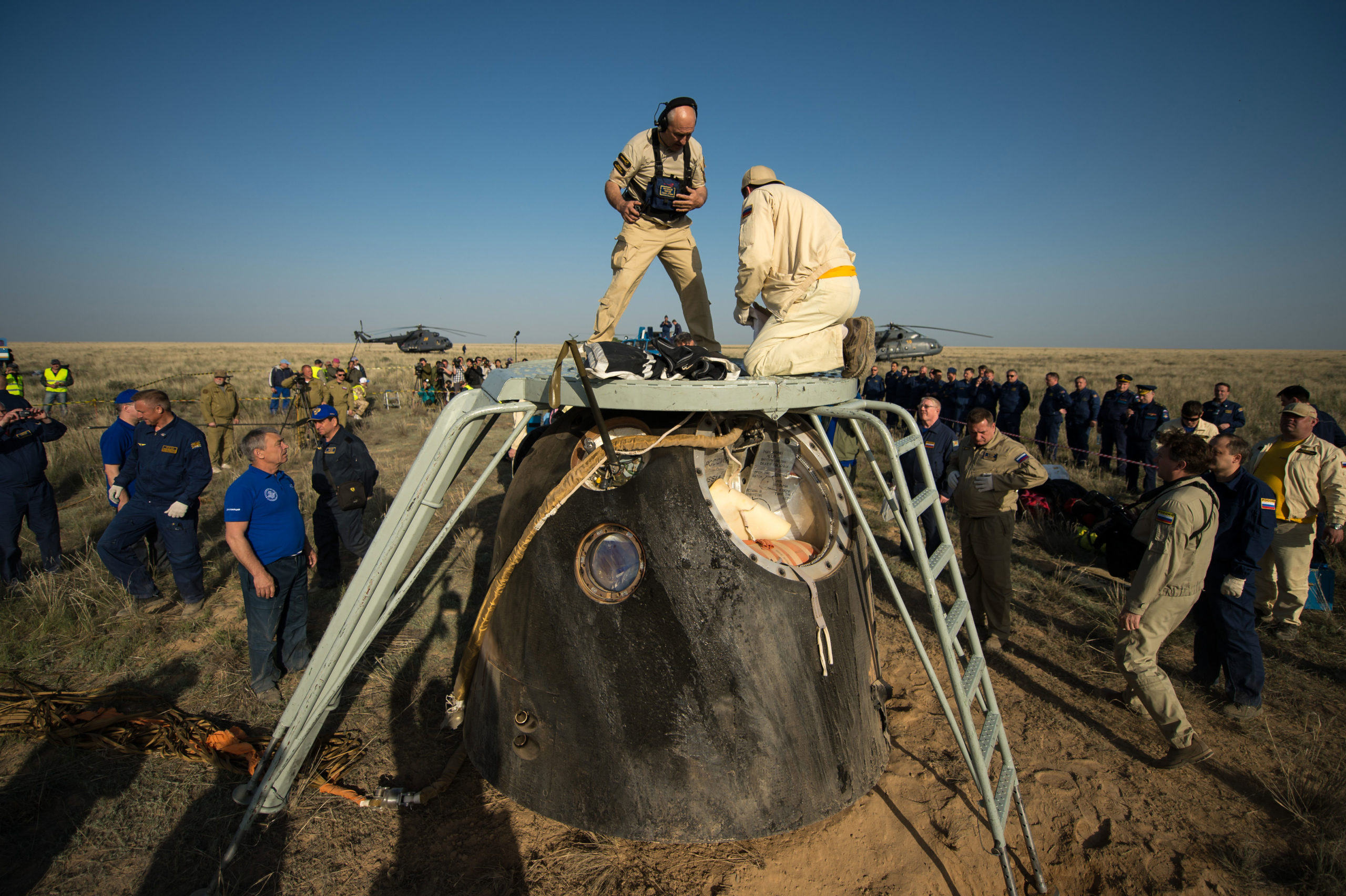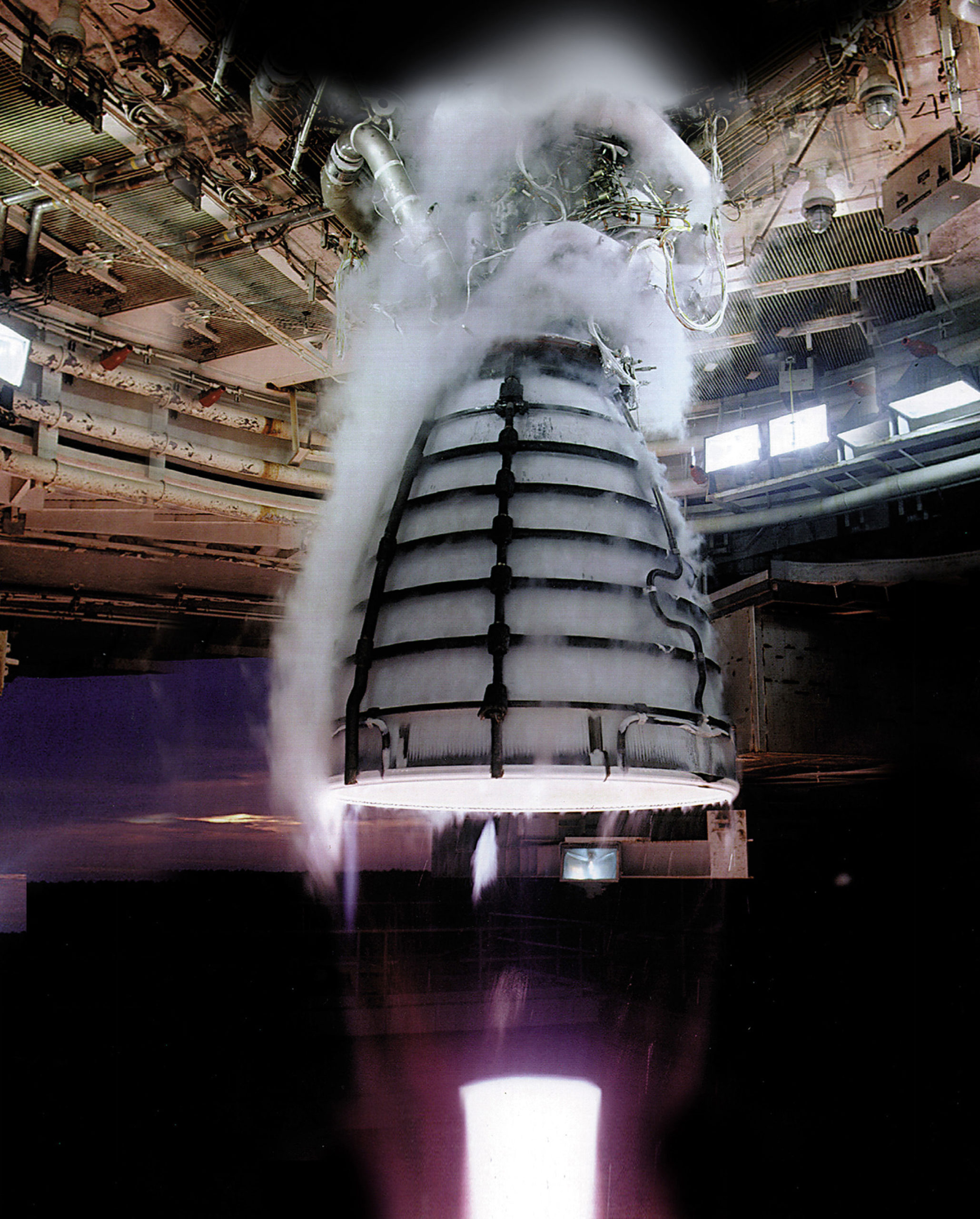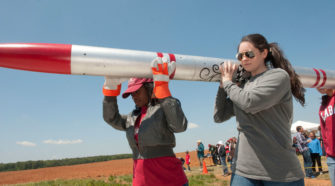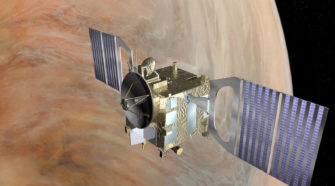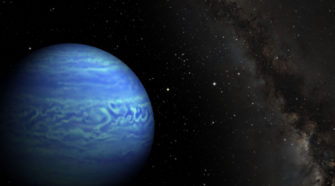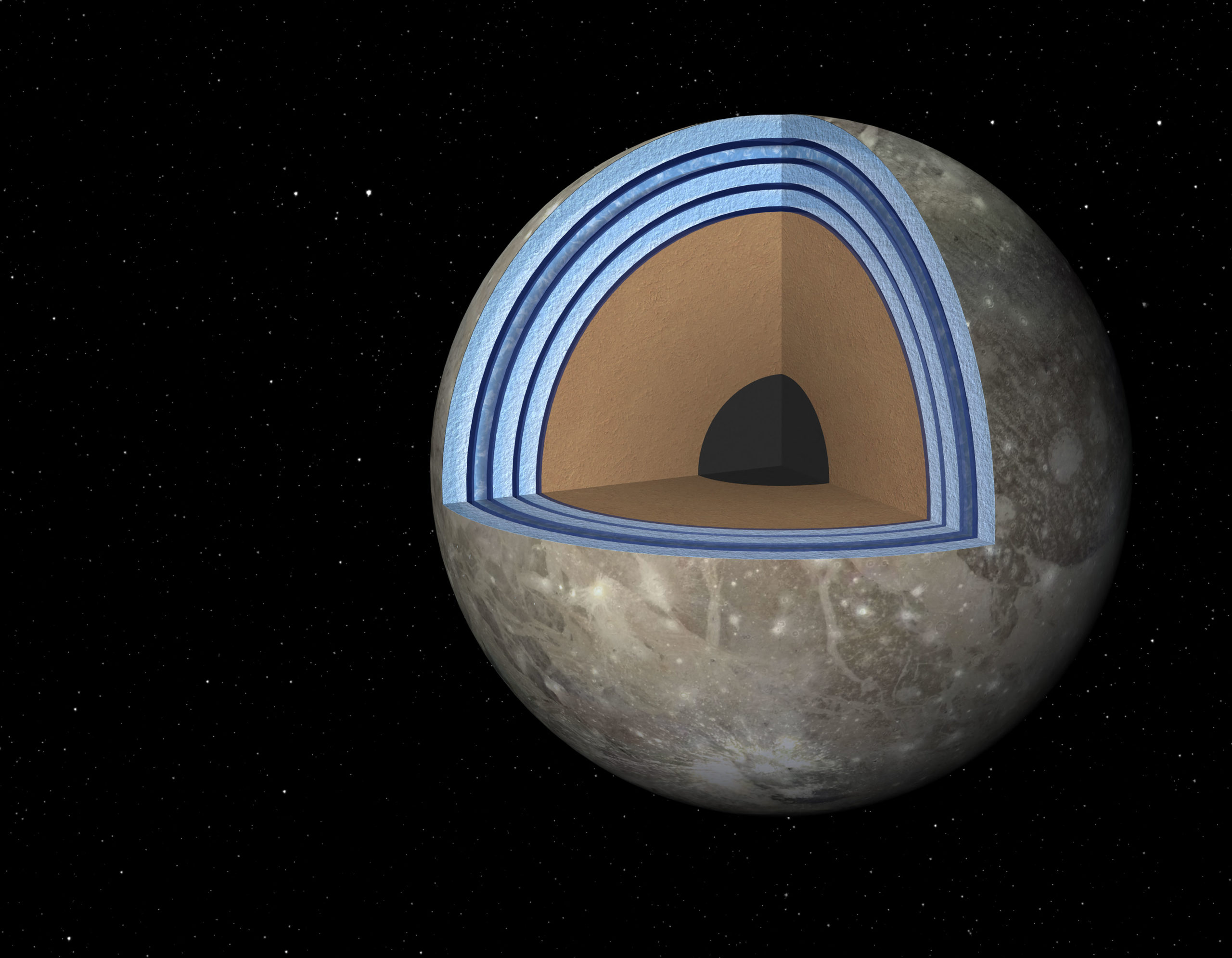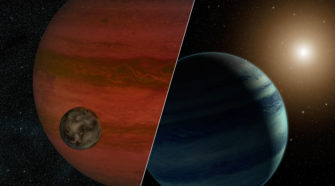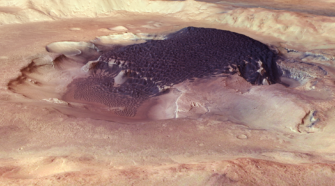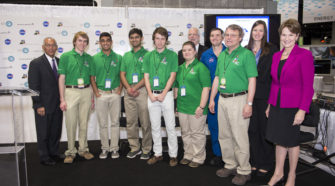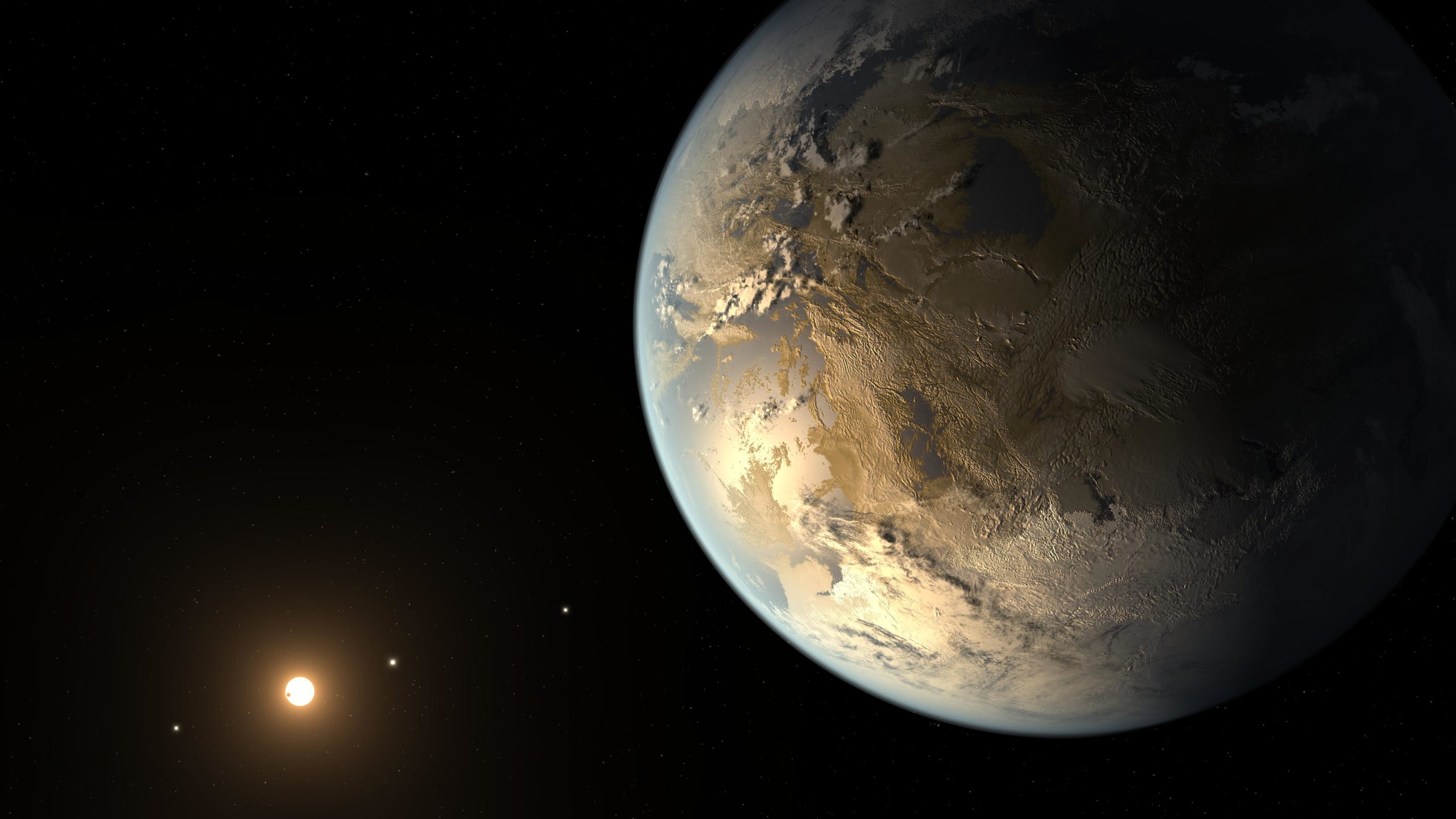Issue #7 (May 2014)
Land ho! Expedition 39 returns to Earth
Support personnel prepare to extract the crew from the Soyuz TMA-11M spacecraft shortly after it landed with Expedition 39 Commander Koichi Wakata of the Japan Aerospace Exploration Agency (JAXA), Soyuz Commander Mikhail Tyurin of Roscosmos, and Flight Engineer Rick Mastracchio of NASA near the town of Zhezkazgan, Kazakhstan on May 14. Wakata, Tyurin and Mastracchio …
SLS engine prepared for the test stand
Formerly known as the Space Shuttle Main Engine, the RS-25 accumulated more than one million seconds – or almost 280 hours – of hot fire experience during 135 missions and numerous engine tests like the one pictured here. Four RS-25 engines will power the core stage of NASA’s Space Launch System (SLS) and the engine …
‘Smoke and fire’ rise over Utah Salt Flats as student rockets soar
The 2013-14 NASA Student Launch rocketry challenge has come to an end – and brought something new to the Bonneville Salt Flats in Tooele County, Utah, where car and motorcycle enthusiasts regularly watch cutting-edge vehicles put to the test, speeding across the vast, flat expanse. On May 17, all eyes there turned upward as 16 …
Venus Express gets ready to take the plunge
After eight years in orbit, ESA’s Venus Express has completed routine science observations and is preparing for a daring plunge into the planet’s hostile atmosphere. Venus Express was launched on a Soyuz–Fregat from the Russian Baikonur Cosmodrome in Kazakhstan on 9 November 2005, and arrived at Venus on 11 April 2006. It has been orbiting …
Coldest brown dwarf found nearby
NASA’s Wide-field Infrared Survey Explorer (WISE) and Spitzer Space Telescope have discovered what appears to be the coldest brown dwarf known – a dim, star-like body that surprisingly is as frosty as Earth’s North Pole. Images from the space telescopes also pinpointed the object’s distance to 7.2 light-years away, earning it the title for fourth …
‘Club sandwich’ of oceans and ice may exist within Jovian moon
The largest moon in our solar system, a companion to Jupiter named Ganymede, might have ice and oceans stacked up in several layers like a club sandwich, according to new NASA-funded research that models the moon’s makeup. Previously, the moon was thought to harbor a thick ocean sandwiched between just two layers of ice, one …
First exomoon possibly found
Titan, Europa, Io and Phobos are just a few members of our solar system’s pantheon of moons. Are there are other moons out there, orbiting planets beyond our sun? NASA-funded researchers have spotted the first signs of an “exomoon,” and though they say it’s impossible to confirm its presence, the finding is a tantalizing first …
Cascading dunes visible in a Martian crater
A breathtaking new mosaic from ESA’s Mars Express shows a stunning swirling field of dark dunes cascading into sunken pits within a large impact crater. The mosaic was created from two images and focuses on the 108 km-wide Rabe crater. The region is 320 km to the west of the large Hellas impact basin, about halfway …
Students create winning design for NASA’s first flight of Orion
After a year-long competition among high school teams across the country, evaluators from NASA, Lockheed Martin and the National Institute of Aerospace have selected Team ARES, from the Governor’s School for Science and Technology in Hampton, Va., as the winner of the high school portion of the Exploration Design Challenge (EDC). The announcement Friday came …
Kepler finds nearest twin to Earth yet
Using NASA’s Kepler Space Telescope, astronomers have discovered the first Earth-size planet orbiting a star in the “habitable zone” — the range of distance from a star where liquid water might pool on the surface of an orbiting planet. The discovery of Kepler-186f confirms that planets the size of Earth exist in the habitable zone …

